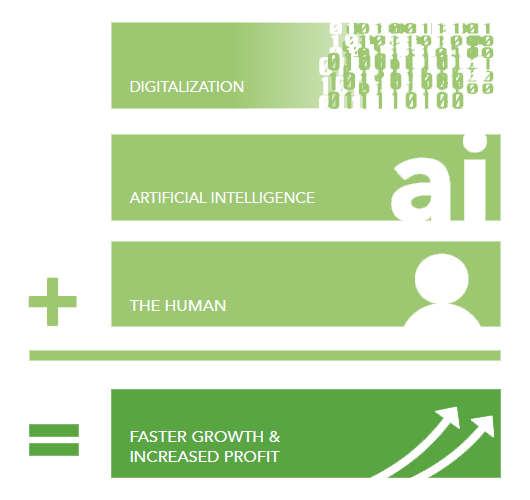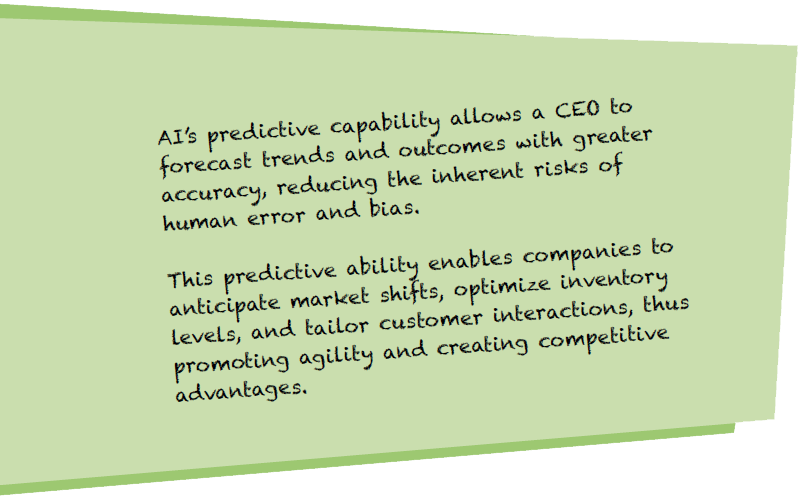
From data to insight and from insight to action
BY HANS BERGGREN
This article was originally published in Supply Chain Effect 6-24 (read the full magazine here).
We are witnessing a kind of paradigm shift within supply chain management. On the one hand, the significant increase in digitalization over the past few years is opening up the potential for increasingly automated, efficient, and flexible supply chains. Much of the inertia and resistance that resulted from a strong investment focus “within the four walls” and siloed thinking has finally been replaced by a focus on the end-to-end flow.
On the other hand, most companies are somewhat confused, wondering how they can take advantage of the AI technology in the midst of this positive trend. It has proven to require deep insights into both the company’s goals, potential process improvements, and how alternative business models can help the company achieve its goals faster. If we don’t understand this, we won’t succeed in creating “the data-driven company” or designing AI-driven strategies. So, what should we do now?
Data-driven companies are more profitable
In MIT Technology Review Insights (January 2024), the focus is on data-driven organizations and data-driven decision-making (DDDM) – an area of growing interest that is generating more value. Companies that excel in this area are both more profitable and grow faster than those that are less data-driven. McKinsey also highlights this (e.g., in the article Insights to Impact: Creating and Sustaining Data-Driven Commercial Growth (January 18, 2022)), arguing that data-driven companies in B2B sales generally achieve 15-25% higher sales growth and EBITDA compared to the average. Just to name a couple of examples.

Understanding “what do we do now?”
We need to understand the “how” by gaining insights into where potential for improvement exists across all parts of our company, based on where the company stands today. The focus should be on identifying the areas with the greatest potential for improvement and the development of more profitable business models.
”Digitalization first” – without data, no AI
Companies like PipeChain play a crucial role in driving digitalization within supply chains by enabling more actors to connect digitally (customers, suppliers, transporters, and other critical actors in the flow), thereby automating more activities and processes. As a result of this increased digitalization, invaluable data is generated, often in real time or at least close to it. It is this data that makes it possible to realize the power of AI. More and more systems are being connected, breaking down the previous silo-based system structure.
This opens up opportunities for human creativity, combined with the machine capacity of AI, to handle enormous amounts of data, dimensions, and decision-making factors. The next step is to understand that the goal is primarily not to present data but to use AI to identify patterns in the data and automatically draw conclusions so that new, better decisions can be made with the help of AI. We must, therefore, shift our focus from “data-to-insight” to “insight-to-action,” where “action” is supported by AI.

Transformation and digitalization with the help of AI
AI and its ultimate impact is not just a function of the technical capabilities AI technology offers, but also its adaptation to human behavior and organizational needs. Some of the key points we have identified in our operations are summarized below.
1. AI’s potential in different areas of the company’s processes and industries
- AI is transformative in many different areas and industries, for example, by optimizing sales and manufacturing or enabling entirely new business models.
- The ability to analyze vast amounts of data and extract patterns, from which better decisions can be recommended or automated, is AI’s core strength. However, success depends on how these insights are used, implemented, and quality assured.
2. Four steps for AI transformation
- Data Collection: The foundation of AI is highquality, relevant data sets.
- Insight Generation: AI can identify trends and correlations, but understanding their significance requires expertise and human judgment.
- Implementing Actions: This is where the human aspect is crucial. Insights must be translated into strategies that account for human behavior and organizational dynamics. We assess that success often depends on automating the “actions” delivered by AI insights.
- Ongoing Quality Assurance: Through continuous learning and improvement of the AI solution, as well as human quality assurance.
3. Understanding human behavior
- AI’s effectiveness depends on how well it is integrated with human decision-making processes.
- Designing successful change initiatives requires a human-centered approach that ensures alignment with real problem-solving and real improvement opportunities. In this respect, AI implementation is no different from other major change projects.
4. The interaction between technology and humans
- The main goal of using AI in supply chains is not to replace humans but to augment human capabilities or to assign the company’s workforce to the right tasks.
Successful AI transformation in supply chains
The path to a successful AI transformation in supply chains is not only a technical journey but also a deeply human one. Understanding this duality is key to effectively harnessing AI’s immense potential.
Hans Berggren is CEO of PipeChain Group.
Insights

If you are interested in learning more about how to create a powerful connected supply chain, here are our latest insights.
Tech papers

To help you get a deeper and better understanding of our solutions and your supply chain, we have developed a number of detailed tech papers on different subjects.
-
Necessary
These cookies are not optional. They are needed for the website to function. -
Statistics
In order for us to improve the website's functionality and structure, based on how the website is used. -
Experience
In order for our website to perform as well as possible during your visit. If you refuse these cookies, some functionality will disappear from the website. -
Marketing
By sharing your interests and behavior as you visit our site, you increase the chance of seeing personalized content and offers.


